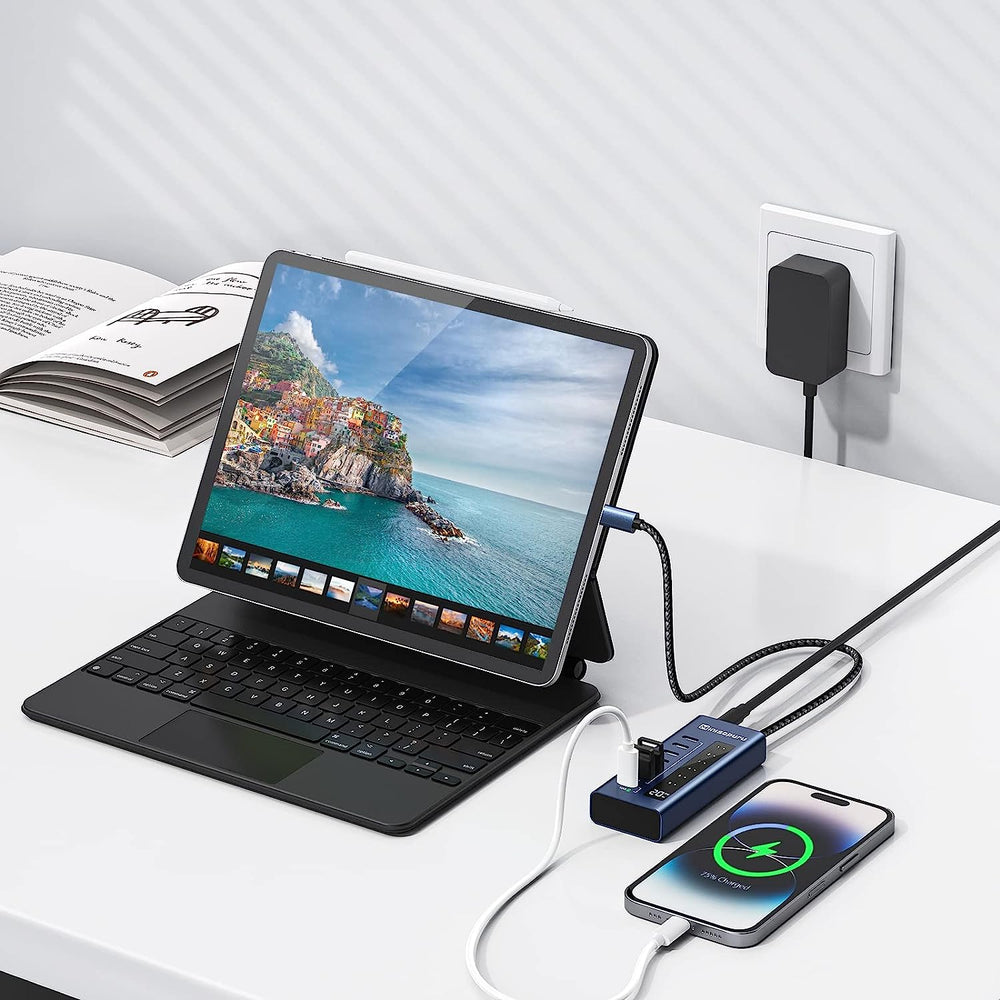If you're an Apple user, chances are you're familiar with the M1 and M2 chips. In November 2020, Apple unveiled the M1 chip, their first processor tailored for Mac computers. Building upon its success, Apple introduced the M2 chip in June 2022, which brought notable enhancements. Let's delve into the key distinctions between these two chips.
For those seeking even more graphics power, the M2 Pro offers up to 19 GPU cores, which is three more than the M1 Pro. And if that's not enough, the M2 Max takes things to the next level with up to 38 GPU cores, resulting in graphic speeds that are over 30% faster than the M1 Max!
If you're seeking enhanced efficiency and speed, you have the option to choose either the M1 Pro or M1 Max, both of which come with a 10-core CPU.
For even greater performance, the M2 Pro and M2 Max come equipped with a 12-core CPU.
If you're looking to take it to the next level, the Mac Studio with M1 Ultra can be configured with up to a 20-core CPU, although this may come at a higher cost.
Moreover, the M2 chip's memory controller can handle up to 100GB of unified memory, which is a significant improvement over the M1's 68.25GB memory bandwidth. This means that the M2 chip can handle more demanding workloads and applications, such as video editing, 3D rendering, and gaming.
Once again, the new M2 Pro and M2 Max surpass their predecessors with 32GB of fast unified memory. In addition, the M2 Max doubles the unified memory bandwidth with 96GB of unified memory.
Till November 4, 2023, Apple Devices with M1 and M2 Chips
The following Apple devices currently utilize the M1 chip:
MacBook Air (M1, 2020)
MacBook Pro (13-inch, M1, 2020)
MacBook Pro (14-inch, M1 Pro/Max, 2021)
MacBook Pro (16-inch, M1 Pro/Max, 2021)
Mac Studio (M1 Max/Ultra, 2022)
iMac (24-inch, M1, 2021)
iPad Pro 12.9-inch (5th Generation)
iPad Pro 11-inch (3rd Generation)
iPad Air (5th Generation)
On the other hand, the following Apple devices currently utilize the M2 chip:
MacBook Air (M2, 2022)
MacBook Pro (13-inch, M2, 2022)
MacBook Pro 14- and 16-inch featuring the M2 Pro and M2 Max (Announced Jan 17, 2023)
Mac mini (M2, 2023)
iPad Pro 12.9-inch (6th Generation)
iPad Pro 11-inch (4th Generation)
GPU Cores - Graphics Performance
Graphics performance is one of the primary differentiators between the M1 and M2 chips, with the number of GPU cores being a key factor. The M1 chip boasts 8 cores, whereas the M2 chip takes it up a notch with 10 cores. This means that the M2 chip can deliver up to 25% better graphics performance than the M1, even when operating at the same power level. This is especially evident when running multiple tasks or resource-intensive applications.For those seeking even more graphics power, the M2 Pro offers up to 19 GPU cores, which is three more than the M1 Pro. And if that's not enough, the M2 Max takes things to the next level with up to 38 GPU cores, resulting in graphic speeds that are over 30% faster than the M1 Max!
CPU Cores – Speed
CPU cores play a crucial role in determining the speed of a processor. Both the M1 and M2 chips feature 8 CPU cores and 8 threads. However, there is a difference in clock speed. The M1 chip has a maximum frequency of 3.5 GHz, while the M2 chip has a maximum frequency of 3.20 GHz. This means that the M2 chip offers an 18% faster CPU performance while consuming the same amount of energy.If you're seeking enhanced efficiency and speed, you have the option to choose either the M1 Pro or M1 Max, both of which come with a 10-core CPU.
For even greater performance, the M2 Pro and M2 Max come equipped with a 12-core CPU.
If you're looking to take it to the next level, the Mac Studio with M1 Ultra can be configured with up to a 20-core CPU, although this may come at a higher cost.
Memory
The M1 and M2 chips differ in terms of the amount of memory they support. The M1 chip can handle up to 16GB of unified memory, while the M2 chip is capable of supporting 24GB of memory, resulting in a 50% increase in memory bandwidth.Moreover, the M2 chip's memory controller can handle up to 100GB of unified memory, which is a significant improvement over the M1's 68.25GB memory bandwidth. This means that the M2 chip can handle more demanding workloads and applications, such as video editing, 3D rendering, and gaming.
Once again, the new M2 Pro and M2 Max surpass their predecessors with 32GB of fast unified memory. In addition, the M2 Max doubles the unified memory bandwidth with 96GB of unified memory.
In conclusion, while the M1 chips are suitable for many users, the M2 chips provide several enhancements over their M1 counterparts that may be particularly beneficial for content creators, gamers, and other users who require greater efficiency, more memory, and improved graphics processing capabilities.
Till November 4, 2023, Apple Devices with M1 and M2 Chips
The following Apple devices currently utilize the M1 chip:
MacBook Air (M1, 2020)
MacBook Pro (13-inch, M1, 2020)
MacBook Pro (14-inch, M1 Pro/Max, 2021)
MacBook Pro (16-inch, M1 Pro/Max, 2021)
Mac Studio (M1 Max/Ultra, 2022)
iMac (24-inch, M1, 2021)
iPad Pro 12.9-inch (5th Generation)
iPad Pro 11-inch (3rd Generation)
iPad Air (5th Generation)
On the other hand, the following Apple devices currently utilize the M2 chip:
MacBook Air (M2, 2022)
MacBook Pro (13-inch, M2, 2022)
MacBook Pro 14- and 16-inch featuring the M2 Pro and M2 Max (Announced Jan 17, 2023)
Mac mini (M2, 2023)
iPad Pro 12.9-inch (6th Generation)
iPad Pro 11-inch (4th Generation)

